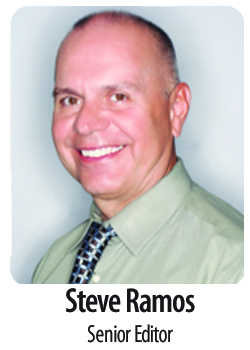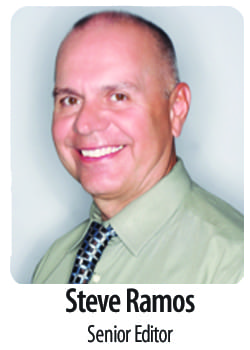S4 occupies the space once taken by The Old Plantation, but when I walk by it, I remember my first time on The Strip 34 years ago
 It was a moment that would have done Barbara Walters proud. Last week, I was working with Dallas Voice reporter David Taffet on his story about the evolution of the gayborhood, talking to him about my own history with Cedar Springs. To borrow a phrase from Sophia Petrillo, “Picture it. Dallas. 1980.”
It was a moment that would have done Barbara Walters proud. Last week, I was working with Dallas Voice reporter David Taffet on his story about the evolution of the gayborhood, talking to him about my own history with Cedar Springs. To borrow a phrase from Sophia Petrillo, “Picture it. Dallas. 1980.”
Two friends and I loaded up in my dented ’67 Ford truck like we were the Clampetts headed for Beverly Hills. We must have been a sight. I had rolled the truck the previous winter in a snowstorm near Amarillo, so the cab was a little smashed in, and the twisted headache rack was higher on one end than the other.
The back passenger-side tire wobbled a little, and I noticed other drivers would maintain a safe distance from me, usually half a football field away. No doubt, they wondered if the convulsing tire was going to fly off and smash through their windshields. A few other brave and concerned folks pulled up to me, rolled down their windows and shouted through the rushing Texas air, “Hey, I think the bearings in your back tire went out.” Bless their neighborly hearts.
If the clanking mechanical mess that was my truck wasn’t enough, my friends and I completed the picture. Three hicks, green and naïve, rolled down the highway like we were the last hillbillies out of Moore County. Our straw cowboy hats had more feathers stuck in the bands than a Sioux war bonnet, that being the style in those days. We sang along to the 8-track mounted next to the CB radio. One minute we were singing, “if we make it through December” with Merle Haggard and the next pretending we were the Bandit, alerting other drivers through the CB to the wiles of the smokey we saw hidden in a stand of trees.
For those uninitiated in the movie and music culture of the ’70s and early ’80s, the Bandit was Burt Reynolds, a role he made famous in the movie “Smokey and the Bandit,” which is just about the greatest movie ever made. Period. And if you don’t know who Merle Haggard is, well you’re just not American and probably shouldn’t speak to me, lest I also find out you don’t know all the words to Patsy Cline’s “Crazy.”
So this traveling mayhem makes it to Cedar Springs right about as the summer sun is disappearing behind buildings taller than the grain elevators back home. We were slack-jawed and stared in amazement. My friends and I had never been to Dallas, mostly because our families thought it was a city akin to Gomorrah, full of Yankees and other people of no count. They predicted we would one day switch on the evening news to see Dallas in flames, courtesy of God whose patience had been worn thin with all that wanton carrying on.
When speaking of Dallas, the men back home would push their hats back on their heads and stare off to the south where Highway 287 disappears into the wasteland that becomes Lubbock. They would switch their tobacco from one cheek to the other, their expressions conveying they had once seen Dallas and weren’t the better for it, like Iwo Jima veterans.
“I had a cousin who married a gal from Dallas,” said family friend O.B. Thomas. “Not a lick of good came from it.”
Of course, that talk just made my friends and me even more anxious to see Dallas. You can’t talk about the bearded lady and expect people not to go see her. I had been in the Air Force, stationed in San Antonio, but that city was a dowager compared to the tart that was Dallas. We walked down Cedar Springs toward The Old Plantation, ready to give the Dallas boys what for. Three lanky Panhandle boys in bad shirts, we were all hat and no cattle.
As I talked to David Taffet about those days, the levees that had contained so many memories crumbled, and images tumbled in, filling my mind with scenes not visited in years. A lot of them were hilarious. Some not so much.
David moved to Dallas in 1979, and I moved to Lewisville in ’86. By then, AIDS waged war in our community, and we were scrambling to survive. After laughing with David about my early adventures on Cedar Springs, I suddenly fought back tears, but they spilled out, to my embarrassment.
I volunteered with Oak Lawn Community Service’s Buddy Project in those days, helping men dying with AIDS by taking them to their medical appointments, shopping for them, cooking their meals and cleaning their homes.
Sometimes, we just listened to them. Listened to their hopes for a miracle that would give them another month to live, another week. Maybe even just another day. Listened to them rail in the emotional darkness that had invaded so cruelly.
As David and I talked about those days and the energy that filled Cedar Springs, I’m grateful for all the memories. The ones of The Strip before AIDS ravaged our community and the ones of when we mobilized and came together in the war against the disease.
Cedar Springs is our Champs-Elysees. In some ways, I’m still that slack-jawed Panhandle boy who first set foot on the street 34 years ago. A little wiser, maybe, but still in awe of a community that bickers within itself but immediately circles the wagons when attacked from the outside. I’ve seen that protective attitude at Dallas Voice as well.
And as for Dallas being full of Yankees? Well, all I can say is I love you, David Taffet. Bless your little New York heart.
Steve Ramos is senior editor at Dallas Voice. He can be reached at ramos@dallasvoice.com.
This article appeared in the Dallas Voice print edition January 17, 2014.

